




Do you have a question about the Xerox COLORQUBE 8870 and is the answer not in the manual?
| Wi-Fi | - |
|---|---|
| Network ready | Yes |
| Security algorithms | HTTPS, SSL/TLS |
| Print technology | Laser |
| Maximum resolution | 2400 x 2400 DPI |
| Time to first page (black, normal) | 5 s |
| Print speed (black, normal quality, A4/US Letter) | 40 ppm |
| Maximum duty cycle | 120000 pages per month |
| Recommended duty cycle | 15000 pages per month |
| Page description languages | PCL 5c, PostScript 3 |
| Maximum internal memory | 2048 MB |
| Sound power level (standby) | 24 dB |
| Display | LCD |
| Certification | EMC Directive 2004/108/EC, FCC Part 15, Class A, Low Voltage Directive 2006/95/EC, RoHS Directive 2002/95/EC |
| Total input capacity | 625 sheets |
| Total output capacity | 350 sheets |
| Maximum input capacity | 2200 sheets |
| Envelopes sizes | C5, DL |
| Maximum print size | 216 x 356 mm |
| Media weight (tray 1) | 60 - 220 |
| Paper tray media types | Bond paper, Card stock, Coated paper, Envelopes, Glossy paper, Labels, Photo paper, Plain paper, Recycled paper, Transparencies |
| Paper tray media weight | 60 - 220 g/m² |
| Non-ISO print media sizes | Executive (184 x 267mm), Legal (media size), Letter (media size), Statement (140 x 216mm) |
| ISO A-series sizes (A0...A9) | A4, A5, A6 |
| JIS B-series sizes (B0...B9) | B5 |
| Multi-purpose tray media types | Bond paper, Business cards, Envelopes, Greeting cards, Heavyweight paper, Labels, Letterhead, Plain paper, Recycled paper, Transparencies |
| Maximum ISO A-series paper size | A4 |
| Standard interfaces | Ethernet, USB 2.0 |
| Optional connectivity | Wireless LAN |
| USB 2.0 ports quantity | 1 |
| Mac operating systems supported | Mac OS X 10.5 Leopard, Mac OS X 10.6 Snow Leopard |
| Server operating systems supported | Windows Server 2003, Windows Server 2008 |
| Windows operating systems supported | Windows 7 Home Premium, Windows 7 Home Premium x64, Windows 7 Professional, Windows 7 Professional x64, Windows 7 Starter, Windows 7 Starter x64, Windows 7 Ultimate, Windows 7 Ultimate x64, Windows Vista Business, Windows Vista Business x64, Windows Vista Home Basic, Windows Vista Home Basic x64, Windows Vista Home Premium, Windows Vista Home Premium x64, Windows Vista Ultimate, Windows Vista Ultimate x64, Windows XP Home, Windows XP Home x64, Windows XP Professional, Windows XP Professional x64 |
| AC input voltage | 100 - 240 V |
| AC input frequency | 50 - 60 Hz |
| Power consumption (standby) | 107 W |
| Power consumption (printing) | 252 W |
| Power consumption (PowerSave) | 47 W |
| Package weight | 35811 g |
| Storage temperature (T-T) | -30 - 60 °C |
| Operating temperature (T-T) | 10 - 32 °C |
| Operating relative humidity (H-H) | 10 - 80 % |
| Depth (imperial) | 20.5 \ |
| Width (imperial) | 16 \ |
| Height (imperial) | 14.5 \ |
| Networking features | Gigabit Ethernet |
| Networking standards | IEEE 802.1x |
| Minimum storage drive space | 160 GB |
| Compatible operating systems | HP UX 11, HP UX 11i, Linux, Mac OS 10.5+, Solaris 10, Solaris 9, Windows 2003 Server, Windows 2008 Server, Windows 7, Windows Vista, Windows XP, Windows XP Pro |
| Depth | 521 mm |
|---|---|
| Width | 406 mm |
| Height | 368 mm |
| Dimensions (WxDxH) | 406 x 521 x 368 mm |
Covers warnings and precautions related to the printer's power cord and electrical connections.
Provides essential safety rules for printer operation, location, and handling.
Details safety procedures and warnings for printer maintenance tasks.
Identifies and illustrates the main external components of the printer.
Describes standard features and available options for the printer.
Explains how to print and use various information pages for printer diagnostics.
Guides through the initial steps for setting up the printer and connecting it.
Details methods for assigning IPv4 and IPv6 addresses to the printer.
Provides instructions for installing necessary printer drivers and software.
Explains how to configure printer power saving modes for energy efficiency.
Provides a general guide to the printing process and driver settings.
Lists compatible paper types, sizes, and loading guidelines for optimal printing.
Detailed instructions for loading paper and other media into various printer trays.
Covers how to choose and configure print settings in Windows and Macintosh drivers.
Explains how to perform automatic and manual 2-sided printing.
Provides guidelines and steps for cleaning the printer's exterior and components.
Information on consumables, how to order them, and where to find serial numbers.
Instructions and precautions for safely moving or shipping the printer.
Addresses common printer problems like power, connectivity, and slow printing.
Detailed steps for clearing paper jams from different printer locations.
Guides users through diagnosing and fixing print quality issues like lines or color problems.
Information on accessing help via control panel messages, online support, and web links.
Details the printer's dimensions, weight, and clearance requirements.
Specifies the recommended temperature and humidity ranges for operation.
Outlines the printer's resolution and maximum print speeds for various modes.
Covers FCC regulations for the US and ICES-003 for Canada.
Provides links to MSDS information for printer materials.
Provides information on disposal regulations for different regions and waste streams.

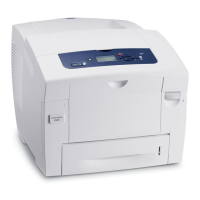
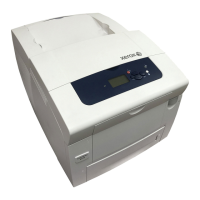

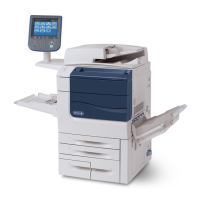
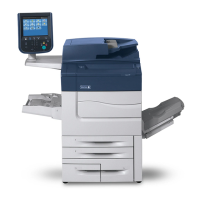
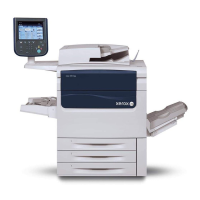
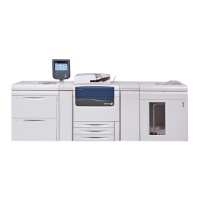
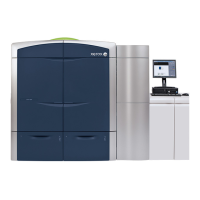

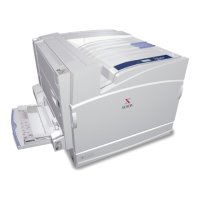
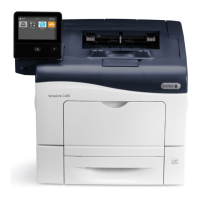
